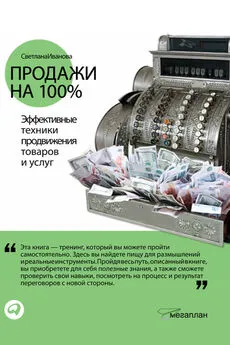Патрик Ренвуазе - Код убеждения [Как нейромаркетинг повышает продажи, эффективность рекламных кампаний и конверсию сайта]
- Название:Код убеждения [Как нейромаркетинг повышает продажи, эффективность рекламных кампаний и конверсию сайта]
- Автор:
- Жанр:
- Издательство:Издательство Питер
- Год:2020
- Город:СПб
- ISBN:978-5-4461-1227-2
- Рейтинг:
- Избранное:Добавить в избранное
-
Отзывы:
-
Ваша оценка:
Патрик Ренвуазе - Код убеждения [Как нейромаркетинг повышает продажи, эффективность рекламных кампаний и конверсию сайта] краткое содержание
Стараетесь быть убедительным, но людей ваши тексты не цепляют? Не секрет, что покупатели принимают решения иррационально, придумывая разумные причины для отказа задним числом, поэтому традиционные модели убеждения и не работают. На помощь маркетологам и продавцам приходит нейромаркетинг, направленный на первичный мозг – древнейшую структуру, которая отвечает за мгновенные и неосознанные реакции.
Опираясь на последние научные данные, Кристофер Морен и Патрик Ренвуазе предлагают модель, которая поможет создать эффективную рекламу, продающие презентации и увеличить конверсию сайта.
Нейромаркетинг – наука убеждать кого угодно, где угодно и когда угодно.
В книге вас ждут: шесть убедительных стимулов, которые обращаются напрямую к первичному мозгу; четыре шага для убеждения любого оппонента; более 30 рабочих кейсов.
Код убеждения [Как нейромаркетинг повышает продажи, эффективность рекламных кампаний и конверсию сайта] - читать онлайн бесплатно ознакомительный отрывок
Интервал:
Закладка:
79. Ayan, S. (2008). Speaking of memory. Scientific American Mind (October/ November): 16–17.
80. Solms, M. (2006). Freud returns. Scientific American Mind 17 (2): 82–88.
81. Dawkins, R. (1976). The Selfish Gene , 368. New York, NY: Oxford University Press.
82. Kahneman, D. and Riis, J. (2005). Living and thinking about it: Two perspectives on life. In: The Science of Well-Being (ed. F.A.H.N. Baylisand B. Keverne), 285–301. Oxford University Press.
83. Schwartz, B. (2004). The Paradox of Choice: Why More is Less , 308.New York: Harper Collins.
84. Iyengar, S.S. and Lepper, M.R. (2000). When choice is demotivating: Can one desire too much of a good thing? Journal of Personality and Social Psychology 79 (6): 995–1006.
85. Katz, J. (1984). The Silent World of Doctor and Patient , 318. Baltimore, MD: John Hopkins University Press.
86. Beard, F.K. (2013). A history of comparative advertising in the United States. Journalism and Communication Monographs 15 (3): 114–216.
87. Singh, M., Balasubramanian, S.K. and Chakraborty, G. (2000). A comparative analysis of three communication formats: Advertising, infomercial, and direct experience. Journal of Advertising 29 (4): 59–75.
88. Lindgaard, G., Fernandes, G., Dudek, C. et al. (2006). Attention web designers: You have 50 milliseconds to make a good first impression! Behaviour & Information Technology 25 (2): 115–126.
89. Geissler, G., Zinkhan, G., and Watson, R.T. (2001). Web home page complexity and communication effectiveness. Journal of the Associationfor Information Systems 2 (1).
90. Tuch, A.N., Bargas-Avila, J.A., Opwis, K. et al. (2009). Visual complexity of websites: Effects on users’ experience, physiology, performance, and memory. International Journal of Human-Computer Studies , 67 (9):703–715.
91. Laham, S.M., Koval, P., and Alter, A.L. (2012). The name-pronunciation effect: Why people like Mr. Smith more than Mr. Colquhoun. Journal of Experimental Social Psychology 48 (3): 752–756.
92. Miele, D.B., Finn, B., and Molden, D.C. (2011). Does easily learned mean easily remembered?: It depends on your beliefs about intelligence. Psychological Science 22 (3): 320–324.
93. Grabner, R.H., Neubauer, A.C., and Stern, E. (2006). Superior performance and neural efficiency: The impact of intelligence and expertise. Brain Research Bulletin , 69 (4): 422–439.
94. Kiesel, A., Kunde,W., Pohl,C. et al. (2009). Playing chess unconsciously. Journal of Experimental Psychology: Learning, Memory, and Cognition , 35 (1): 292–298.
95. Shteingart, H.,Neiman, T., and Loewenstein, Y. (2013). The role of first impression in operant learning. Journal of Experimental Psychology 142 (2):476–488.
96. Atkinson, R.C. and Shiffrin, R.M. (1968). Human memory: A proposal system and its control processes. In: The Psychology of Learning and Motivation: II (ed. K.W. Spence and J.T. Spence), 89–195. London: Academic Press.
97. Miller, G. (1956). The magical number seven, plus-or-minus two: Some limits on our capacity for processing information. Psychological Revie , 101 (2): 343–352.
98. Colavita, F.B. (1974). Human sensory dominance. Perception and Psychophysics 16 (2): 409–412.
99. Li, Y., Liu, M., Zhang,W. et al. (2017). Neurophysiological correlates of visual dominance: A lateralized readiness potential investigation. Frontiersin Psychology 28: 303.
100. Silverstein, D.N. and Ingvar, M. (2015). A multi-pathway hypothesis for human visual fear signaling. Frontiers in System Neuroscience 9: 101.
101. Potter, M.,Wyble, B., Hagmann, C.E. et al. (2014). Detecting meaning in RSVP at 13 ms per picture. Attention, Perception, & Psychophysics 76 (2): 270–279.
102. Ledoux, J.E. and E.A. Phelps. (2004). Emotional networks in the brain. In Handbook of Emotions , 2e (ed. M. Lewis and J.M. Haviland-Jones),157–172. New York: Guilford Press.
103. Todorov, A., & Ballew, C. (2007). Predicting political elections from rapid and unreflective face judgments. Proceedings of the National Academyof Sciences, USA 104 (46): 17948–17953.
104. Lorenzo, G.L., Biesanz, J.C., and Human, L.J. (2010). What is beautiful is good and more accurately understood: Physical attractiveness and accuracy in first impressions of personality. Psychological Science 21 (12):1777–1782.
105. Abrams, R.A. and Christ, S.E. (2003). Motion onset captures attention. Psychological Science 14 (5): 427–432.
106. Langton, S.R. et al. (2008). Attention capture by faces. Cognition 107 (1):330–342.
107. Caharel, S., Ramon, M., and Rossion, B. (2014). Face familiarity decisions take 200 msec in the human brain: Electrophysiological evidence from a go/no-go speeded task. Journal of Cognitive Neuroscience 26 (1): 81–95.
108. Wolfe, J.M. and Bennett, S.C. (1997). Preattentive object files: Shapeless bundles of basic features. Vision Research 37 (1): 25–43.
109. Broyles, S.J. (2006). Subliminal advertising and the perpetual popularity of playing to people’s paranoia. Journal of Consumer Affairs 40 (2): 392–406.
110. Collin, S.P., Knight, M.A., Davies, W.L. et al. (2003). Ancient colourvision: Multiple opsin genes in the ancestral vertebrates. Current Biology , 13 (22): 864–865.
111. Tamietto, M., Cauda, F., Corazzini, L.L., et al. (2010). Collicular vision guides nonconscious behavior. Journal of Cognitive Neuroscience 22 (5): 888–902.
112. Guntekin, B. and Basar. E. (2014).A review of brain oscillations in perception of faces and emotional pictures. Neuropsychologia 58: 33–51.
113. Changizi, M.A., Zhang,Q., and Shimojo, S. (2006). Bare skin, blood and the evolution of primate colour vision. Biology Letters , 2 (2): 217–221.
114. Buechner, V.L., Maier, M.A., Lichtenfeld, S. et al. (2014). Red – Take a closer look. PLoS One 9 (9): e108111.
115. Ma⇨ en, T., Hewett, K., and Roth, M. (2000). Managing images indifferent cultures: A cross-national study of color meanings and preferences. Journal of International Marketing 8 (4): 90–107.
116. Hevner, K. (1935). Experimental studies of the affective value of colors and lines. Journal of Applied Psychology 19 (4): 385–398.
117. Grossman, R.P. and Wisenblit, J.Z. (1999). What we know about consumer’s color choice s. Journal of Marketing Practices: Applied Marketing Science 5 (3): 78–88.
118. Kuhbandner, C. and Pekrun, R. (2013). Joint effects of emotion and color on memory. Emotion 13 (3): 375–379.
119. Elliot, A.J. and Maier, M.A. (2007). Color and psychological functioning. Current Directions in Psychological Science 16 (5): 250–254.
120. Lichtenfeld, S., Maier, M. A., Elliot, A. J. et al. (2009). The semantic red effect: Processing the word red undermines intellectual performance. Journal of Experimental Social Psychology 45 (6): 1273–1276.
121. Loeber, S., Vollstдdt-Klein, S., Wilden, S. et al. (2011). The effect of pictorial warnings on cigarette packages on attentional bias of smokers. Pharmacology, Biochemistry, and Behavior 98 (2): 292–298.
122. Descartes, R. (1637). Discours de la Mйthode .
123. Bossaerts, P. and Murawski, C. (2015). From behavioural economics to neuroeconomics to decision neuroscience: the ascent of biology inresearch on human decision making. Current Opinion in Behavioral Sciences 5 (Supplement C): 37–42.
124. Bechara, A. (2003). The role of emotion in decision-making: Evidence from neurological patients with orbitofrontal damage. Brain and Cognition 55 (1): 30–40.
125. Damasio, A.R. (1994). Descartes’ Error , 336. New York: Harper Collins.
126. Thaler, R.(2015). Misbehaving: The Making of Behavioral Economics , 452. New York: W.W. Norton.
127. Damasio, A.R. (1996). The somatic marker hypothesis and the possible functions of the prefrontal cortex. Philosophical Transactions: Biological Sciences 351 (1346): 1413–1420.
128. Eagleman, D. (2015). The Brain: The Story of You , 224. New York: Pantheon Books.
129. Plutchik, R. and H. Kellerman. (1980). Emotion: Theory, Research and Experience. Vol . 1, 424. London, UK: Academic Press.
130. Coricelli, G., Dolan, R.J., and Sirigu, A. (2007). Brain, emotion and decision-making: The paradigmatic example of regret. Trends in Cognitive Sciences 11 (6): 258–265.
131. Vogel, S. and Schwabe, L. (2016). Learning and memory under stress: Implications for the classroom. npj Science of Learning 1: 16011.
132. Alter, A.L. (2017). Irresistible: The Rise of Addictive Technology and the Business of Keeping Us Hooked , 370. New York: Penguin Press.
133. McGaugh, J.L. (2013). Making lasting memories: Remembering the significant . Proceedings of the National Academy of Sciences, USA 110 (Supplement 2): 10402–10407.
134. Kensinger, E.A. (2009) Remembering the details: Effects of emotion. Emotion Review 1 (2): 99–113.
135. di Pellegrino, G., Fadiga, L., Fogassi, L. et al. (1992). Understanding motor events: A neurophysiological study. Experimental Brain Research 91 (1): 176–180.
136. Dehaene, S., Changeux, J.P., Naccache, L. et al. (2006). Conscious, preconscious, and subliminal processing: A testable taxonomy. Trends inCognitive Sciences 10 (5): 204–211.
137. Ledoux, J.E. (2016). Anxious: Using the Brain to Understand and Treat Fearand Anxiety , 428. New York: Penguin Books.
138. Burke, C. (2015). 100 customer service statistics you need to know. Insight Squared (22 April).
139. Maslow, A.H. (1943). A theory of human motivation. Psychological Review 50 (4): 370–396.
140. Maslow, A.H. (1968). Toward a Psychology of Being , 2e, 212. New York: Van Nostrand Reinhold.
141. Witt, U. (2001). Learning to consume – A theory of wants and the growth of demand. Journal of Evolutionary Economics 11 (1): 23–36.
142. Berns, G.S. and Moore, S.E. (2012). A neural predictor of cultural popularity. Journal of Consumer Psychology 22 (1): 154–160.
143. Du, P. and MacDonald, E.F. (2015). Products’ shared visual features do not cancel in consumer decisions. Journal of Mechanical Design 137 (7): 071409-071409–411.
144. Cowan, N. (2010). The magical mystery four: How is working memory capacity limited, and why? Current Directions in Psychological Science 19 (1): 51–57.
145. Bromage, B.K. and Mayer, R. (1986).Quantitative and qualitative effects of repetition on learning from technical text. Journal of Educational Psychology 78 (4): 271–278.
146. Dimofte, C.V., Johansson, J.K., and Ronkainen, I.A. (2008). Cognitive and affective reactions of U.S. consumers to global brands. Journal of International Marketing 16 (4): 113–135.
147. Cowan, N. (2005). Working Memory Capacity. Essays in Cognitive Psychology , 246. New York: Psychology Press.
148. Gilchrist, A.L., Cowan, N., and Naveh-Benjamin, M. (2008). Working memory capacity for spoken sentences decreases with adult aging: Recallof fewer, but not smaller chunks in older adults. Memory (Hove, England) 16 (7): 773–787.
149. Smith, E.E. and Jonides, J. (1998). Neuroimaging analyses of human working memory. Proceedings of the National Academy of Sciences, USA 95 (20): 12061–12068.
Читать дальшеИнтервал:
Закладка:
![Обложка книги Патрик Ренвуазе - Код убеждения [Как нейромаркетинг повышает продажи, эффективность рекламных кампаний и конверсию сайта]](/books/1072703/patrik-renvuaze-kod-ubezhdeniya-kak-nejromarketing.webp)









